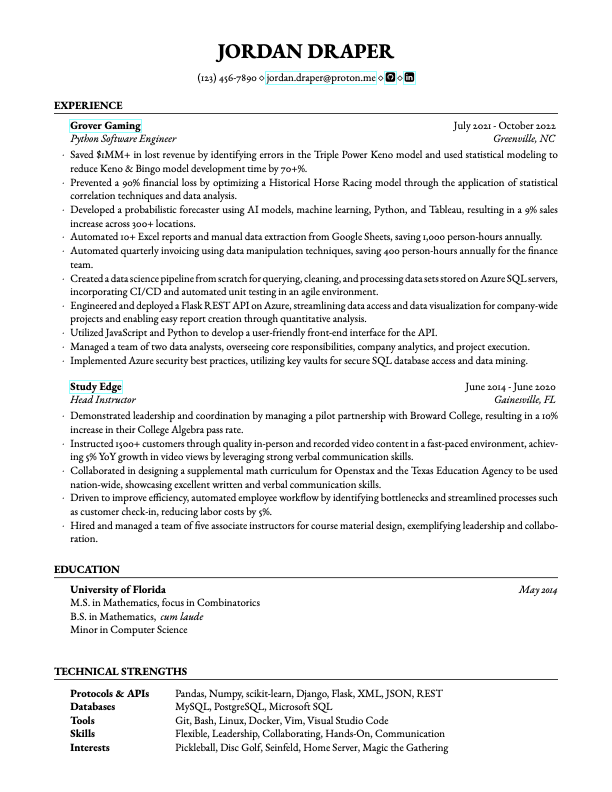The job application process is often fraught with frustration, tedium, and an inordinate consumption of time. But it doesn’t have to be. As a seasoned job applicant, I have refined my approach to this process, streamlining it to a point where it’s not only manageable but also rewarding. In this post, I’ll walk you through my optimized workflow, from preparing my resume to submitting tailored applications.
Embracing LaTeX for Resume Creation
The core of every job application is the resume. It’s the first point of contact between you and a potential employer, and it should be a true reflection of your skills, experiences, and capabilities. To make the creation and editing of my resume as smooth as possible, I rely on LaTeX, a powerful typesetting system that prioritizes content over formatting.
I have a slightly modified LaTeX template as the base of my resume. This structure allows me to edit the content in plain-text easily, ensuring that the emphasis is always on the content rather than getting lost in the maze of design and layout. With LaTeX, I’ve found a balance between an aesthetically pleasing document and one that’s easy to maintain and update.
Leveraging Git for Version Control
Next, I use Git, a distributed version control system, to keep a history of all application-specific resumes. Each job application should ideally be complemented by a resume tailored to that specific job post. To manage this effectively, I maintain a ‘main’ branch that houses my resume in its most comprehensive, albeit general, form. This resume is a full showcase of my abilities, and I’d be comfortable giving it out to anyone who required it.
However, to stand out to applicant tracking systems and hiring managers, I create a separate branch for each application from the general resume. I label each branch descriptively, such as job-title-company, making it easy to track and retrieve in the future. I then tweak this resume slightly to better suit the job application at hand, ensuring that it highlights the most relevant skills and experiences pertaining to the job description.
Using Visual Studio Code and LaTeX Workshop for Seamless Compilation
My integrated development environment (IDE) of choice is Visual Studio Code, a feature-rich code editor that supports a multitude of programming languages. To simplify the process of converting my LaTeX resume into a PDF, I use the LaTeX Workshop extension. This invaluable tool enables me to render LaTeX into a PDF without ever having to leave my IDE, making the process of creating, editing, and compiling my resumes a breeze.
Final Thoughts
The job application process may be daunting, but by leveraging the right tools and adopting an efficient workflow, it can be made less so. With a structured resume in LaTeX, version control with Git, and seamless compilation using Visual Studio Code and LaTeX Workshop, I have managed to supercharge my job application process. I hope that by sharing my approach, you too can streamline your application process and make your job search journey a more productive and less stressful experience.


